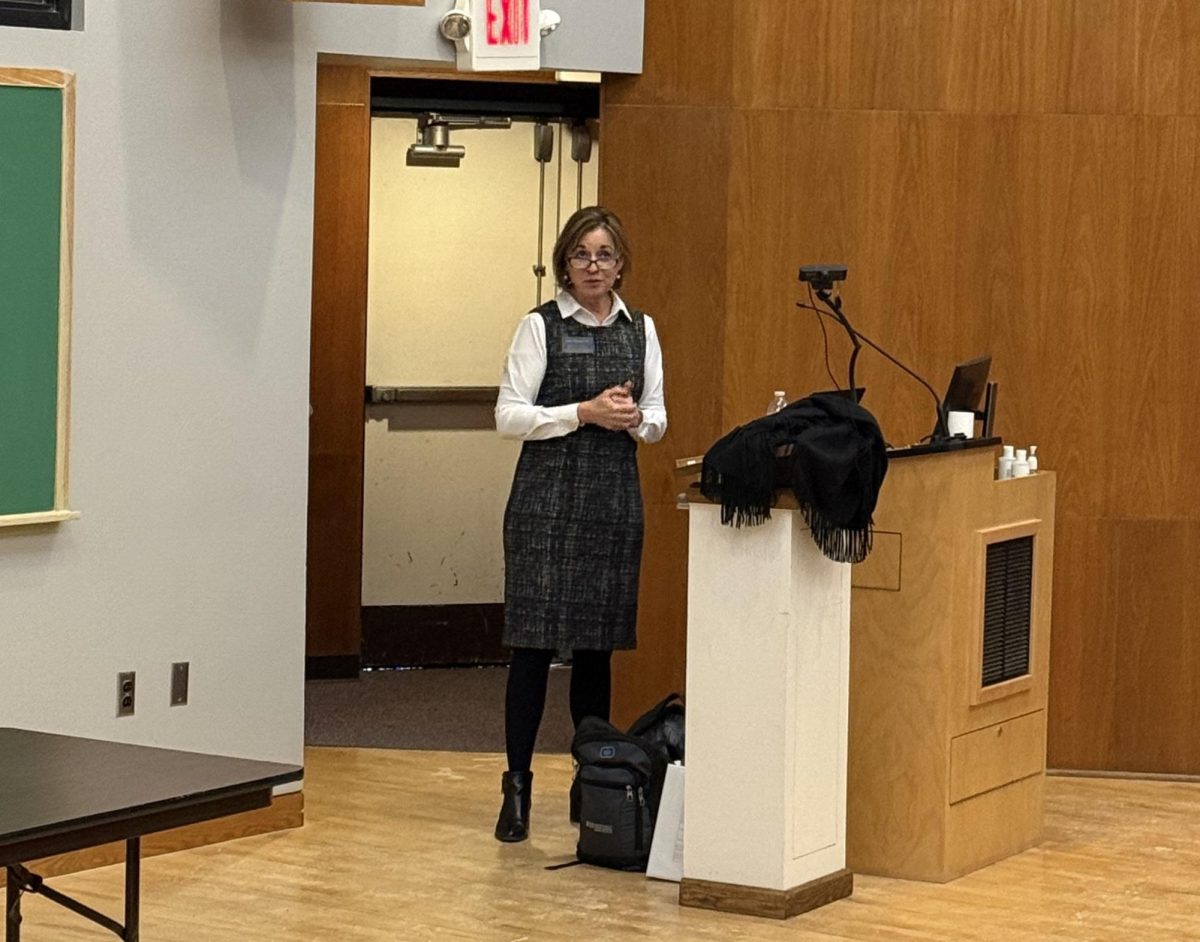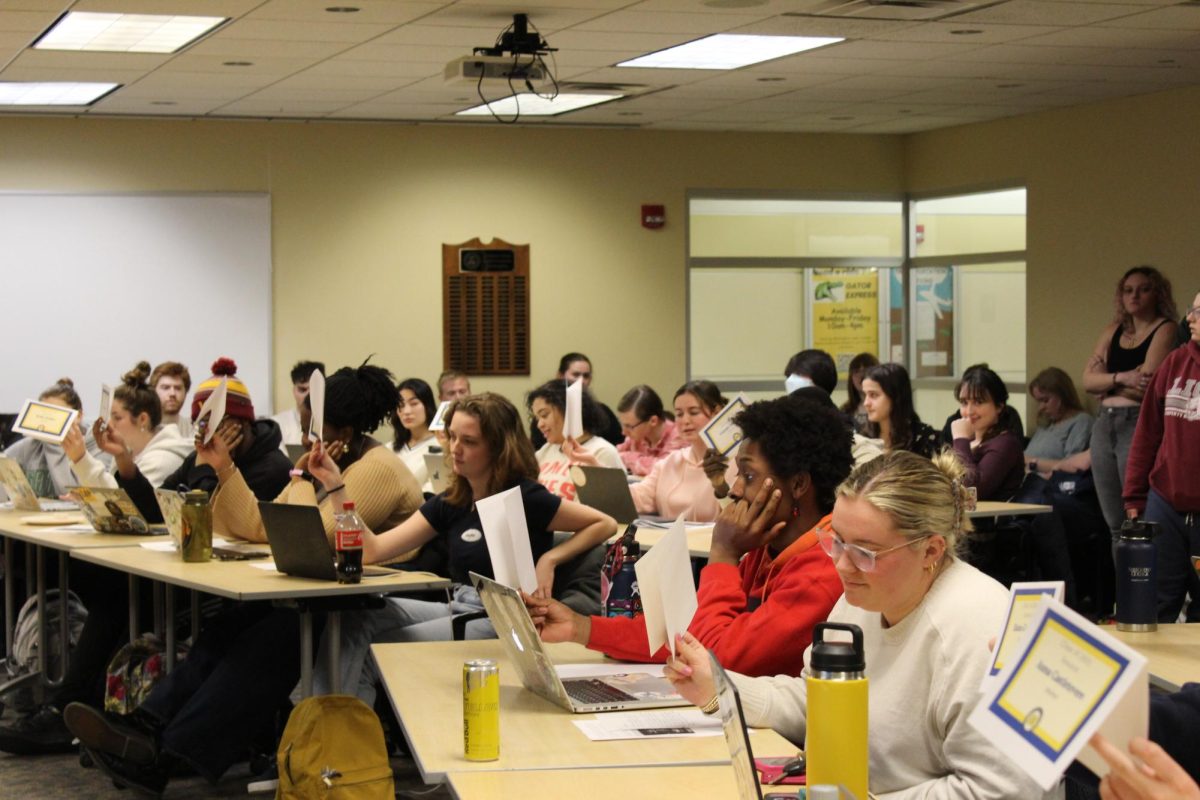The Free Application for Federal Student Aid is undergoing a multi-year overhaul and upgrade, which could affect the amount of federal financial aid students receive as early as next academic year.
One of the primary results of the change to the FAFSA is an increase in the number of students nationwide from low-income backgrounds who qualify for Pell grants, a type of federal funding awarded to students who face significant financial need.
“So in a lot of ways it’s going to be a positive that more students are qualifying for greater amounts of federal aid,” said Director of Financial Aid Natasha Eckart. “Unfortunately, there is going to be a small population of students that it’s going to be the opposite, though, too. So we’re going to try to work with our students that are in that population.”
The FAFSA operates using a formula that takes into account many of the factors affecting students’ financial situations, like parent income, student income, family assets and more. Once the FAFSA is submitted, the student receives a Student Aid Index — formerly known as the Expected Family Contribution — which is the amount of money the federal government has calculated is feasible for the student to pay for college.
The Education Department estimated the changes mean that an additional 610,000 students nationwide will be eligible to receive Pell grants.
This year’s changes to the formula also mean that students with siblings in college or whose families are small business owners, own a farm or have private investment properties may face higher SAIs than in previous years, even if their financial situation has not significantly changed, according to Eckart.
However, Allegheny plans to work with these students to ensure they are not paying significantly more for college due to changes that are out of their control.
“Even though the federal aid formula is changing, Allegheny will continue its commitment that if a family’s financial situation is consistent, that their aid will not decrease,” Eckart wrote in a Jan. 8 email to The Campus. “When students decided to enroll at Allegheny, we committed to them that their financial package will be similar for all 4 years if their family’s finances didn’t change significantly and we will continue to honor that commitment even though the FAFSA is changing.”
Given the name of the legislation dictating the changes — the FAFSA Simplification Act of 2020 — it is not surprising that the new form is also designed to be easier for users to fill out. The number of questions users have to answer has dropped from 106 to 36, and users now pull in their financial information directly from the Internal Revenue Service website.
The new FAFSA also has higher levels of income protection, meaning that a greater percentage of families’ income will be excluded from the calculation that determines how much students should pay to attend college.
However, even though it was mandated in the legislation, the Education Department has failed to include adjustments for inflation in this year’s FAFSA. The department has said they plan to implement adjustments for inflation in next year’s 2025-26 FAFSA, but students this year may face artificially high SAIs due to recent levels of inflation, according to the Washington Post.
The FAFSA was originally scheduled to become available on Oct. 1 — like it has every year since 2016 — but internal delays pushed the opening date to Dec. 1 and then finally Dec. 30. Though this delay is not likely to have significant ramifications for current students, it does shorten the timeline for prospective students who weigh the financial aid packages from colleges they applied to to determine which school they will attend.
In the first week of its opening, the application was in its “soft launch” phase, a phrase coined by the Education Department to describe how the form was only available for short periods of time so site performance and form functionality can be monitored. As of Jan. 8, the FAFSA is now consistently available.
The Financial Aid Office plans to send out an informational email soon to all students that details the changes to the FAFSA, according to Eckart. The office also plans to send targeted messaging to students who they expect may face changes in their SAI. Additionally, the college has updated the information on its financial aid website and has extended the deadline for returning students to submit the FAFSA until March 15.
If students have concerns about their SAI, Eckart encouraged them to reach out to the Financial Aid Office sooner rather than later so that they can develop a plan to mitigate any unexpected increase in their SAI.
Though the Financial Aid Office only has preliminary estimates of the total amount of aid students will receive from the college next academic year, Eckart anticipates there will likely be an overall increase in aid provided to students who are disadvantaged by the new changes to the FAFSA. That amount may be “somewhat offset” by the students who newly qualify for additional federal aid.
In general, due to its novelty, Eckart anticipates that the changes to the form will likely lead to some difficulties for families filling it out.
For example, the new direct link to the IRS means that users must consent for their information to be transferred from the IRS. Unfortunately, Eckart expects that some families will either miss the question asking them to provide consent or skip it because they do not understand it, which means their financial information will not be provided in the form and they will not qualify for federal aid.
“In the past, we’ve been able to collect signature pages and things like that that families have missed in that step in the process, and now we can’t do that,” Eckart said. “Only the Department of Ed has the authorization to collect that consent, so when a student or family misses that, it unfortunately is a little more challenging for them to either have to go back into the FAFSA to provide it or work with the Department of Ed to provide it. We can’t be that middle man in this system, that process, any longer.”
Additionally, the direct link to the IRS could pose new problems for students whose parents do not have Social Security numbers, which could lead to hurdles and extra work when it comes to setting up an account, according to Eckart.
“What I don’t want folks to be worried about is that this is going to negatively affect or impact them,” Eckart said. “I want students to be reassured that we’re here to support them … this overall should be a positive for the most part for most of the students.”














